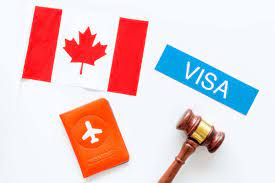Are you a Canadian citizen planning to travel to India but unsure about the visa application process? Look no further! Applying for an Indian visa from Canada can seem daunting, but with this step-by-step guide, we’ll break down everything you need to know. From filling out the application form to submitting your documents, we’ve got you covered. Get ready to pack your bags and embark on your journey with confidence!
Introduction to Indian E-Visa and Regular Visa
There are two types of visas that Canadian citizens can use to enter India: the Indian e-Visa and the regular visa. Both visas have their own set of requirements and benefits, so it’s important to choose the right one for your trip. INDIAN VISA FOR CANADIAN CITIZENS
The Indian e-Visa is an electronic visa that allows you to stay in India for up to 60 days. It’s a multiple-entry visa, so you can come and go from India as many times as you want during the validity period. The e-Visa is available for tourist, business, and medical purposes, and it can be applied for online.
The regular visa is a traditional paper visa that allows you to stay in India for up to 90 days. It’s also a multiple-entry visa, so you can come and go from India as many times as you want during the validity period. The regular visa is available for all of the same purposes as the e-Visa, plus it allows for certain work and study activities. You’ll need to apply for the regular visa through your local Indian consulate or embassy.
So, which type of visa should Canadian citizens choose? If you’re only planning on staying in India for a short period of time (up to 60 days), then the Indian e-Visa is a good option. It’s convenient and easy to apply for, and it doesn’t require any extra paperwork. If you’re planning on staying in India for a longer period of
Eligibility Requirements for Canadian Citizens
To be eligible for an Indian E-Visa, Canadian citizens must have a valid passport with at least six months of remaining validity. They must also have a credit or debit card to pay the visa fee, as well as a recent passport-sized photograph.
Regular visas for India require a bit more documentation. In addition to a passport and photograph, applicants will need to submit an application form, as well as supporting documents such as proof of travel plans and hotel reservations. They may also be required to provide evidence of financial means and/or a letter of invitation from someone in India.
Benefits of Indian E-Visa vs. Regular Visa
There are several benefits of the Indian E-Visa over the regular visa for Canadian citizens. The E-Visa is cheaper, simpler to apply for, and more convenient. INDIAN VISA AIRPORTS FOR ENTRY
The regular visa requires a valid passport, two photographs, a completed visa application form, and a processing fee. The E-Visa only requires a passport and an email address. The application process for the E-Visa is completely online, while the regular visa must be applied for in person at an Indian consulate or embassy.
The E-Visa is also valid for multiple entries into India over a period of one year, while the regular visa is generally only valid for a single entry. The E-Visa can also be used for business purposes, while the regular visa cannot.
The Indian E-Visa is a more convenient and affordable option for Canadian citizens looking to travel to India.
Cost Comparison of Both Visas
There are two types of visas that Canadian citizens can use to enter India: the Indian E-Visa and the regular visa. Both visas have their own set of benefits and drawbacks, so it’s important to compare them before deciding which one to choose.
The main difference between the two visas is the cost. The Indian E-Visa costs $75 USD, while the regular visa costs $160 USD. The E-Visa is also valid for a shorter period of time than the regular visa (1 year vs. 5 years), so if you plan on making multiple trips to India within a year, the regular visa may be a better option.
Another difference between the two visas is that the E-Visa can only be used for tourism and business purposes, while the regular visa can also be used for other activities such as study or work. If you’re planning on doing anything other than tourism or business in India, you’ll need to apply for a regular visa.
It’s important to note that not all nationals are eligible for an E-Visa. If you’re not a citizen of Canada, the United States, United Kingdom, or Australia, you’ll need to apply for a regular visa.
So, which visa should you choose? It really depends on your individual circumstances. If you’re looking for a cheaper option with fewer restrictions, go with the Indian E-Visa. If you need a longer-term solution or
Conclusion
The Indian e-visa and regular visa are both great choices for Canadian citizens looking to travel to India. Depending on your needs, you may find one or the other more beneficial. It is important to remember that whichever you choose, it is essential that all of your paperwork be complete and up-to-date before travelling. By following these simple steps, Canadians should have no problem enjoying a safe trip to India with either an Indian e-visa or a regular visa.


